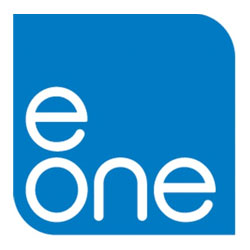Have you created enough demand that physical distribution matters?
Bob Morrison is a music industry veteran. With a career that spans over thirty years, he currently runs a music business consulting firm called Chart Noise and serves as the VP Catalog and Special Markets for eOne Music. Recently I was able to talk with him about distribution and the role it plays in the music industry. After a ton of deliberation, we came upon some interesting points you may have been overlooking all along and can apply to your own career.
Because CDs are not completely irrelevant JUST yet, we are all familiar with buying a CD or a record in a store – whether it be at Wal-Mart, Best Buy, Lifeway or Grimey’s. How do those CDs and records actually get there though? If you’re an artist, you’ve either figured this out already or you’re wondering how to distribute your music. Rewind even further – maybe you’re wondering if it’s even necessary, that maybe offering your music should solely be within the digital world now.
So what is the definition of distribution, anyway? Believe it or not, there is no easy answer to this question. Especially in today’s world, anyone can sign up with TuneCore and have their music distributed digitally across all the go-to services: iTunes, Spotify, Amazon, Google Play, Rhapsody, Zune, Simfy, Deezer. Many artists love the convenience factor (seriously, I just created an account in 30 seconds). In fact it’s so easy that the company boasts, “Sell your music online in three easy steps: upload your music, upload your art, pick your stores…and you’re done.”
But what about physical distribution? Like a lot of things in the online world, the Internet seems to make more sense in today’s culture. But maybe you’re “old fashioned.” You’re an artist who, for whatever reason, has pressed physical CDs and records, and you want to distribute your music in Wal-Mart, Target, or maybe just a few local record stores. Seems a little more difficult when you’re just starting out, doesn’t it? Look at it this way: “You have to get people into the store to buy your record before distribution matters at all,” Bob says. As an artist, are you relevant enough that people are willing to get up off their couch, drive to the nearest store, deliberately pull your album off the shelf and purchase it? If the answer is no or you’re not sure, then you have a lot more to focus on before you even start thinking about distribution. You have to create awareness and a compelling story before you can make any sales at all. And how to do you generate sales? No, you don’t promote it. Of course promotion is essential, but that doesn’t always make the listener swipe their credit card in the end. You make the listener need your music.
You create demand.
“Distribution is almost the last piece of the puzzle,” Bob says. The only way distribution in any shape or form is ever going to matter to you is if you create enough demand for your music. And no, contrary to popular belief, you don’t have to be spinning on the radio for physical distribution to matter. A charting single or album does indeed make distribution more logical and creates a consumer-directed awareness, but there are exceptions to every rule, and many artists out there do just fine without radio.
“It goes back to focus and vision,” Bob says. Radio is segmented, and when you realize all the number of formats – Rock, Top 40, Hot AC, AC, CHR, Alternative, INSPO, AAA, Monitored, Indicator, Non-Reporters, Reporters – in addition to how many fragmented genres of music there are, an artist really needs to play to the specific vision for who they are and who their audience is. After all, this is the music business of the twenty-first century. “There are many examples of artists creating careers without significant airplay,” Bob says. “They’ve worked very hard over the years to build strong touring bases and have been very purposeful about communicating with and growing their fanbase as well. These artists are making a living through other awareness mediums, such as social networking, YouTube, Facebook, etc. Radio didn’t start them, nor did it sustain them early on in their careers; yet by staying focused, the artists created a need for their music.”
Many other artists continue to fight the industry standard, and some reap serious benefits because of it. Canadian artist Jon Bauer, for example, does extremely well. A recent Independent Music Award winner and Contemporary Christian Album of the Year recipient, Jon tours about 150-200 dates a year, many of which are based in the United States. He recently just wrapped up fourteen days on the road in support of the Canadian leg of Michael W. Smith’s world tour. As a successful career artist, Jon has been building and creating demand here in the United States. “He’s making an impact from the road,” Bob comments.
More than ever these days, there are constant bends to the rules. What may work for one artist doesn’t always work for another, depending on a variety of different reasons: the artist themselves, the musical genre, the format of the songs, even the region of the country. Considering distribution in particular, “the industry defines it one way, and the artist may define it in a completely different way,” Bob reflects. “In fact, artists today MUST define things differently. What is their vision? What are the definitions of their success, and what benchmarks have they established to measure that success? How well do they communicate, and ultimately, how great is the music? That’s really where it needs to start. If the music is exceptional, and the music is creating fans, then everything gets easier.”

 Listen Live
Listen Live
Leave a Reply
You must be logged in to post a comment.